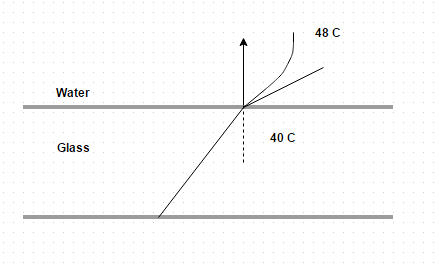MCQs
Total Questions : 62
| Page 2 of 7 pages
Question 11. Air enters a rectangular duct measuring 30 cm by 40 cm with a velocity of 8.5 m/s and a temperature of 40 degree Celsius. The flowing air has a thermal conductivity 0.028 W/m K, kinematic viscosity 16.95 * 10¯⁶ m²/s and from empirical correlations the Nusselt number has been approximated to be 425. Find out the flow Reynolds number
Answer: Option C. -> 0.1719 * 10⁶
Answer: (c).0.1719 * 10⁶
Answer: (c).0.1719 * 10⁶
Answer: Option D. -> Greater than 6000
Answer: (d).Greater than 6000
Answer: (d).Greater than 6000
Answer: Option A. -> Less than 2300
Answer: (a).Less than 2300
Answer: (a).Less than 2300
Answer: Option C. -> 30-300 W/m² K
Answer: (c).30-300 W/m² K
Answer: (c).30-300 W/m² K
Question 15. Heat is being transferred by convection from water at 48 degree Celsius to glass plate whose surface is exposed to water at 40 degree Celsius. The thermal conductivity of water is 0.6 W/m K and the thermal conductivity of glass is 1.2 W/m K. The spectral gradient of temperature in the water at the water glass interface is 10¯⁴ K/m. The heat transfer coefficient in W/m² K is

Answer: Option B. -> 750
Answer: (b).750
Answer: (b).750
Answer: Option D. -> Laminar flow
Answer: (d).Laminar flow
Answer: (d).Laminar flow
Answer: Option B. -> 4
Answer: (b).4
Answer: (b).4
Answer: Option C. -> 2 l b / l + b
Answer: (c).2 l b / l + b
Answer: (c).2 l b / l + b
Answer: Option D. -> d₂ – d₁
Answer: (d).d₂ – d₁
Answer: (d).d₂ – d₁
Answer: Option B. -> 1, 2, 3 and 4
Answer: (b).1, 2, 3 and 4
Answer: (b).1, 2, 3 and 4
















